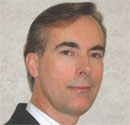Departments
Clinical Brief
Amorphous Calcium Phosphate Sealants—the Potential to Remineralize
Shradha Sharma, BDS, DMD; Gerard Kugel, DMD, MS, PhD
Dental caries is an infectious chronic disease of the oral cavity. Caries occur as a result of the formation of biofilm, most commonly on the occlusal surfaces of the posterior teeth. The biofilm enables the proliferation of bacteria and consequently reduces the pH, which causes a loss of mineral content in the tooth and further progression of the caries into the tooth.1,2 Pit-and-fissure sealants have been an accepted caries prevention treatment since the 1970s and are considered an effective noninvasive treatment to prevent or arrest occlusal caries.3
There are two types of sealants available: resin-based and glass-ionomer–based. Fluoride release from glass-ionomer sealants is considered to have additional benefit in caries prevention. However, Garcia-Godoy and Donly concluded that the maximum amount of fluoride released was in the first 24 hours and then fell sharply.4 In addition, there are no studies documenting evidence that fluoride release from either glass-ionomer or resin-based sealants is superior in preventing further caries development.5
Various studies have been conducted to explore different sealant materials and placement techniques for caries prevention.3,6,7 Nevertheless, the efficacy of a sealant is generally measured through the direct correlation of long-term retention of sealants to a lower incidence of caries.8 Literature reviewed by Beauchamp and colleagues noted reductions in the incidence of caries after the placement of sealants that ranged from 86% at 1 year to 78.6% at 2 years and 58.6% at 4 years.2
During the last decade, research has been conducted to test materials that may stimulate the repair of tooth structure. When used at the initial stages of the disease these materials can intervene and arrest the progression of carious lesions and allow healing of the affected tissue. Amorphous calcium phosphate (ACP) is one such agent that has become commercially available in a topical paste. ACP is a noncrystalline form of calcium phosphate. It has been shown to remineralize tooth structures and aid in the prevention of tooth decay. When added as a filler to sealants and composites, ACP may aid in the remineralization of enamel and dentin.9 During a carious attack, pH is lowered by bacteria, acid release, or food, and this drop results in ACP being converted to hydroxyapatite, which precipitates, thus replacing the hydroxyapatite lost to acid.
A study conducted by Skrtic and colleagues also concluded that sealants based on ACP-filled methacrylate composites have the potential to remineralize carious enamel lesions not only at the surface but also through the depth of the lesion.10 Meyer and Eanes showed that the solubility of ACP enables it to release supersaturating levels of calcium (Ca2+) and phosphate (P04) ions in proportions favorable for hydroxyapatite formation.11 Further, ACP hinders the colonization of dental surfaces by cariogenic bacteria.12 Finally, the extended time-release characteristics of ACP from sealants also may help to prevent demineralization along with remineralization of tooth structure.13
In technical assessments, Aegis® Pit and Fissure Sealant with ACP (Bosworth, Skokie, IL) has been shown to have suitable shear bond strength and other properties in comparison to marketed sealants.14 There are currently two ongoing in vitro studies conducting further assessments of this product: one at the University of Michigan and the other at Howard University [personal communication].
CASE PRESENTATION
A 16-year-old patient presented for routine oral examination (Figure 1). It was noted that the first molars had deep pits and fissures. Caries incidence was ruled out by reviewing the bitewing x-rays and transillumination. Pit-and-fissure sealant was considered the treatment of choice.
A rubber dam was placed to isolate tooth No. 14 (Figure 2). Tooth No. 14 was cleaned using pumice and a contra-angled brush on a slow handpiece. The teeth were thoroughly rinsed; the etch was rinsed off with water and excess water was removed using suction (Figure 3). Aegis® Pit and Fissure Sealant with ACP was applied on the pits and fissures using a disposable brush. The sealant was then light-cured for 20 seconds using a high-intensity curing light (Figure 4 and Figure 5). An explorer was used to confirm marginal adaptability (Figure 6).
CONCLUSION
In vitro studies conducted using different ACP solutions have been shown to remineralize enamel subsurface lesions. Addition of ACP to appropriate resins has been shown to be useful in enhancing the performance of sealants by providing substantial release of Ca2+ and PO4 ions.
After using Aegis Pit & Fissure Sealant with ACP and reviewing the benefits of ACP, the authors conclude that this is an appropriate sealant to use for pits and fissures.
However, future research should also focus on whether Aegis and other ACP-containing materials prevent or repair carious lesions. It is important to determine whether ACP can deliver what the laboratory results seem to indicate and bring us one step closer to healing rather than surgically removing disease.
REFERENCES
1. Oong EM, Griffin SO, Kohn WG, et al. The effect of dental sealants on bacteria levels in caries lesions: a review of the evidence. J Am Dent Assoc. 2008;139(3):271-278.
2. Beauchamp J, Caufield PW, Crall JJ, et al. Evidence-based clinical recommendations for the use of pit-and-fissure sealants: a report of the American Dental Association Council on Scientific Affairs. J Am Dent Assoc. 2008;139(3):257-268.
3. Croll TP, Sundfeld RH, Berg JH. A pit-and-fissure clinical protocol. Compend Contin EducDent. 2005;26(12):862-868.
4. Garcia-Godoy F, Abarzua I, De Goes MF, Chan DC. Fluoride release from fissure sealants. J Clin Ped Dent. 1997;22;45-49.
5. Oliveira FS, da Silva SM, Machado MA, et al. Resin-modified glass ionomer cement and a resin-based material as occlusal sealants: a longitudinal clinical performance. J Dent Child. 2008;75(2):134-143.
6. Gillcrist JA, Vaughan MP, Plumlee GN Jr, Wade G. Clinical sealant retention following two different tooth-cleaning techniques. J Public Health Dent. 1998;58(3):254-256.
7. Tandon S, Kumari R, Udupa S. The effect of etch-time on the bond strength of a sealant and on the etch-pattern in primary and permanent enamel: an evaluation. ASDC J Dent Child. 1989;56(3):186-190.
8. Simonsen RJ. Pit and fissure sealant: review of the literature. Pediatric Dent. 2002;24(5):393-414.
9. Cochrane NJ, Saranathan S, Cai F, et al. Enamel subsurface lesion remineralisation with casein phosphopeptide stabilised solutions of calcium, phosphate and fluoride. Caries Res. 2008;42(2):88-97.
10. Skrtic D, Hailer AW, Takagi S, et al. Quantitative assessment of the efficacy of amorphous calcium phosphate/methacrylate composites in remineralizing caries-like lesions artificially produced in bovine enamel. J Dent Res. 1996;75(9):1679-1686.
11. Meyer JL, Eanes ED. A thermodynamic analysis of the amorphous to crystalline calcium phosphate transformation. Calcif Tissue Res. 1978;25: 59-68.
12. Rahiotis C, Vougiouklakis G, Eliades G. Characterization of oral films formed in the presence of a CPP-ACP agent: an in situ study. J Dent. 2008;36(4):272-280. Epub 2008 Mar 4.
13. Skrtic D, et al. Effect of the monomer and filler systems on the remineralizing potential of bioactive dental composites based on amorphous calcium phosphate. Polymers for Advanced Technologies. 2001; 12(6);369-379.
14. Menis DL, Kossoff M, Pozen H, Van Deusen T. Physical Properties of an ACP containing Pit and Fissure Sealant. J Dent Res. 2007; 86(A):2059.
About the Author

Assistant Professor
Research Administration
Tufts University School of Dental Medicine
Boston, Massachusetts
About the Author

Associate Dean for Research
Tufts University School of Dental Medicine
Boston, Massachusetts



